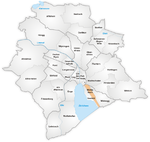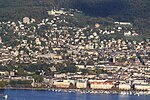Raetia

Raetia ( REE-sh(ee-)ə; Latin: [ˈrae̯tɪ.a]; also spelled Rhaetia) was a province of the Roman Empire, named after the Rhaetian people. It bordered on the west with the country of the Helvetii, on the east with Noricum, on the north with Vindelicia, on the south-west with Transalpine Gaul and on the south with Venetia et Histria, a region of Roman Italy. It thus comprised the districts occupied in modern times by eastern and central Switzerland (containing the Upper Rhine and Lake Constance), southern Germany (Bavaria and most of Baden-Württemberg), Vorarlberg and the greater part of Tyrol in Austria, and part of northern Lombardy in Italy. The region of Vindelicia (today eastern Württemberg and western Bavaria) was annexed to the province at a later date than the others. The northern border of Raetia during the reigns of emperors Augustus and Tiberius was the River Danube. Later the Limes Germanicus marked the northern boundary, stretching for 166 km north of the Danube. Raetia linked to Italy across the Alps over the Reschen Pass, by the Via Claudia Augusta. The capital of the province was Augusta Vindelicorum, present-day Augsburg in southern Germany. The Mandarin Chinese name for Switzerland, 瑞士 (Ruìshì in pinyin) is a homonym of Raetia.
Excerpt from the Wikipedia article Raetia (License: CC BY-SA 3.0, Authors, Images).Raetia
Felsenstrasse, Zurich Kreis 8
Geographical coordinates (GPS) Address Nearby Places Show on map
Geographical coordinates (GPS)
| Latitude | Longitude |
|---|---|
| N 47.36 ° | E 8.56 ° |
Address
Felsenstrasse 4
8008 Zurich, Kreis 8
Zurich, Switzerland
Open on Google Maps











